The Most Interesting Flags in the World
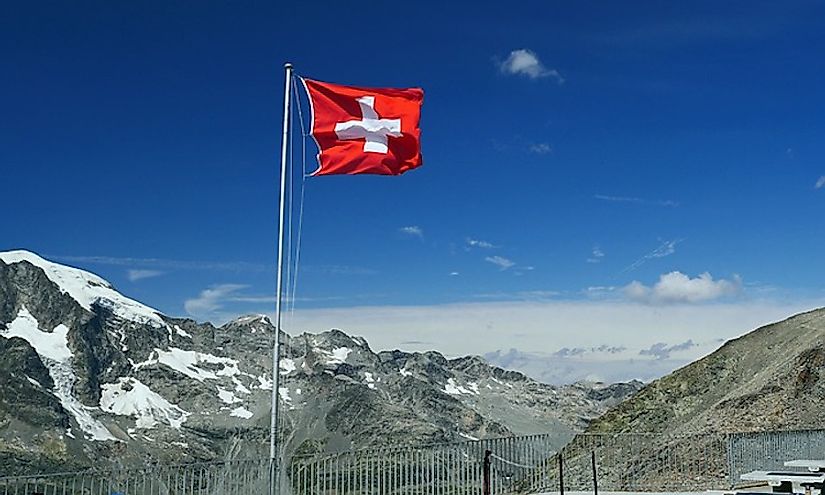
5. Kyrgyzstan
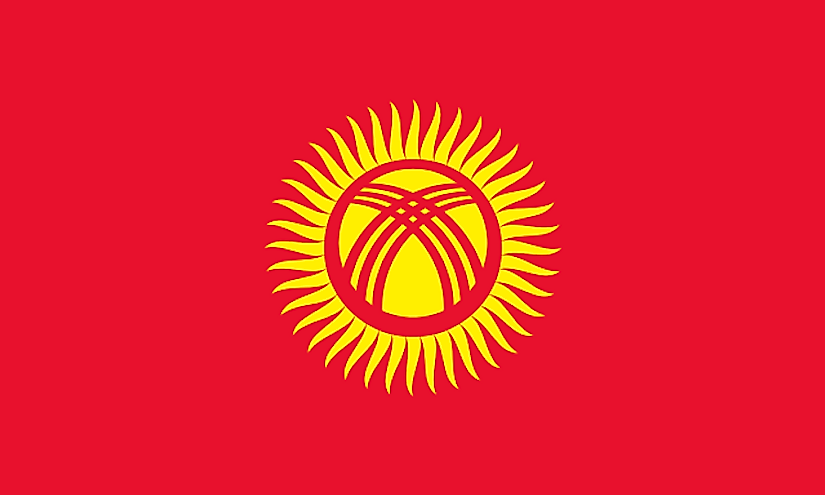
The country of Kyrgyzstan was formerly a part of the Soviet Union (USSR) before declaring independence in August 1991. It was a few month's later, in March 1992, that the Supreme Council of the country officially adopted the new flag. The background of the flag is a red color that is meant to symbolize valor and bravery. The center of the flag features an ornate yellow sun. Around the sun are forty evenly spaced rays, running in a counterclockwise direction on the front of the flag and clockwise on the back. The sun itself is supposed to stand for peace and wealth, while the rays symbolize the 40 different Kyrgyz tribes that were unified by the Kyrgyz epic hero Manas against the Mongols. Inside the sun is a stylized depiction of a tunduk, the top part of the traditional Kyrgyz yurt. This stylized depiction is in the form of a red ring that is crossed over by two sets of three lines and is representative of the family home.
4. Lebanon
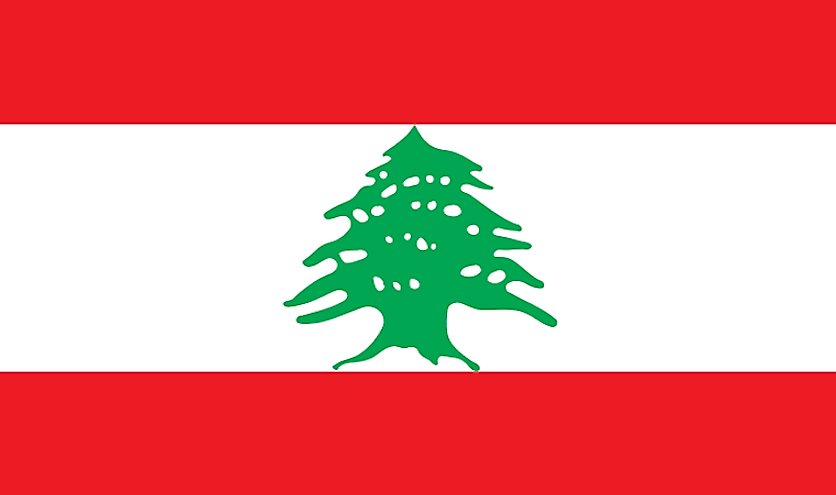
From 1920 until 1943 the State of Greater Lebanon was a League of Nations Mandate of the French. Prior to Lebanese independence in 1943, Lebanese politician and businessman Henri Pharaon (1901-93) drew the flag. It was officially adopted on December 7, 1943 during a meeting in parliament where the constitution was being modified. The background of the flag is a horizontal triband that is red, white and red. Some theories believed that Pharaon was inspired by the Austrian flag and that he used those colors to match the Beqaa Valley in between Mount Lebanon and the Anti-Lebanon mountains. Others believed that the red stripes represent the blood shed by the Lebanese people in protecting their country, with the white representing snow and purity. The center of the flag is a green cedar that represents the Lebanon Cedar. The green cedar is a symbol of holiness and peace and is referenced in many biblical passages. It also represents the fact that Lebanon is sometimes called the Land of the Cedars.
3. Switzerland
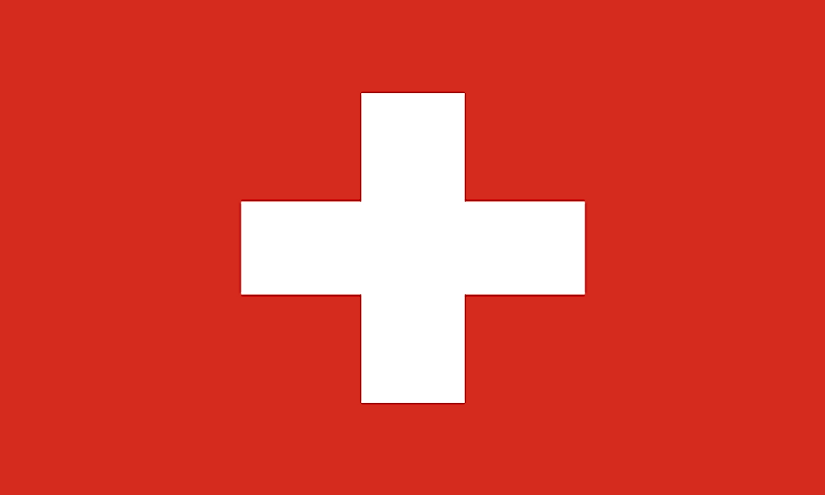
During his campaigns at the time of the Napoleonic Wars, Swiss General Nikalus Franz von Bachmann (1740-1831) used a white cross with a red field and in 1814, the Swiss Confederacy introduced this flag, surrounded by the coat of arms as a military ensign. Over the decades, the flag design garnered much popularity among private organizations and the military and in 1840, General Guillaume-Henri Dufour (1787-1875) proposed using the flag for all military forces. The Tagsatzung (Federal Diet) passed the resolution, fixing the final design the following year. In 1889, the flag was officially adopted as the national flag of Switzerland, making it one of the oldest and unchanged flag designs in the world.The Swiss flag is one of the most recognizable in the world, with its red background and bold, equilateral white cross. It is also one of only two sovereign state flags to be square shaped, with the other being the flag of Vatican City.
2. Bhutan
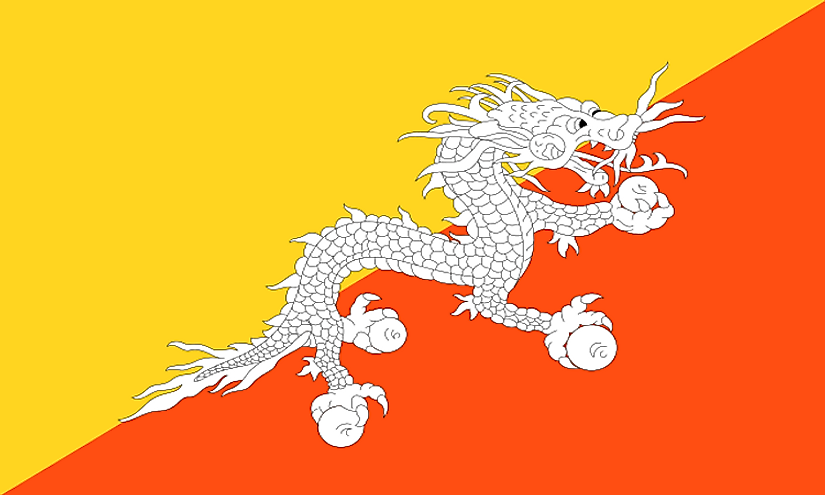
The first basic design for Bhutan's flag dates back to 1947 when Mayum Choying Wangmo (1897-1994) created it after a national flag was requested by King Jigme Wangchuck (1929-72). It was first displayed two years later at the signing of the Indo-Bhutan Treaty. The Bhutanese flag was modified in 1956 and again in 1969, but since then the current flag design has remained unchanged. The background of Bhutan's flag is divided diagonally with the upper corner yellow and the bottom corner orange. Yellow symbolizes the civil tradition and authority of the king, while orange shows the Buddhist spiritual tradition of the country. At the center of the flag is the Druk, also called the Thunder Dragon, which spreads out equally over the yellow and orange colors to show the importance of both. The Druk is white colored to symbolize the purity of inner deeds and thoughts of the people of Bhutan. The jewels the Druk holds shows the wealth of Bhutan, as well as the security of its people.
1. Somalia
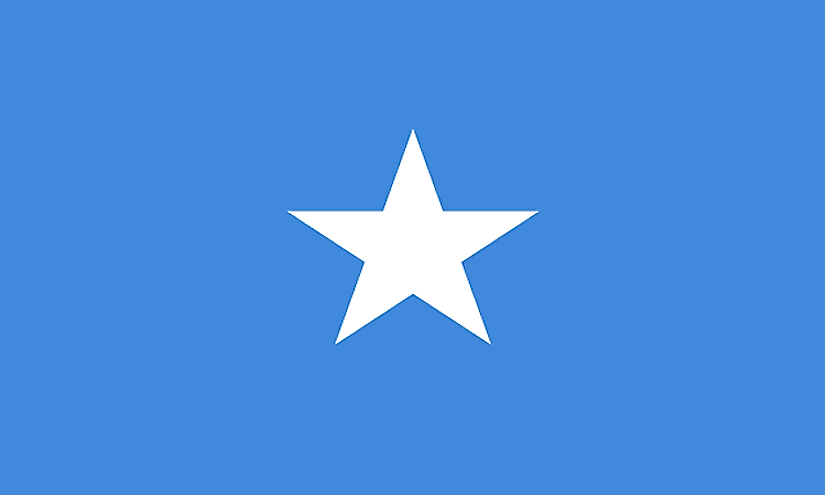
From 1950 to 1960, what is now Somalia was the Trust Territory of Somaliland that was administered by Italy. In 1954, the Somali labor trade union picked Somali scholar Mohammed Awale Liban to design a flag as part of the preparation for independence. The flag was used as the official flag of the Somali Republic, which combined the Trust Territory of Somaliland and British Somaliland (1884-1960). The background of the flag is a light blue color that originally was a nod to the role of the United Nations in Somalia's transition, but now symbolizes the Indian Ocean and sky. At the center of the flag is the five pointed and white colored Star of Unity. This star represents the areas where the Somali people have traditionally lived: Djibouti, Soamliland, southern Somalia, the Ogaden region of Ethiopia and the North Eastern Province of Kenya.











